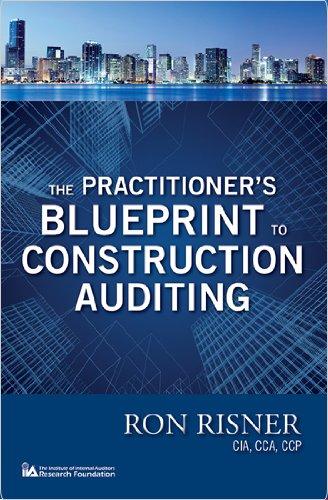Answered step by step
Verified Expert Solution
Question
1 Approved Answer
correct option On February 1, 2013, Sawa Inc. issued 5-year, $1 million bonds with a coupon rate of 6% and yield of 5%. The bonds
correct option 






On February 1, 2013, Sawa Inc. issued 5-year, $1 million bonds with a coupon rate of 6% and yield of 5%. The bonds pay interest semi-annually on August 1 and February 1 each year. The partially completed amortization table is given below (rounded to the nearest dollar). Sawa Inc. redeemed the bonds on August 2, 2015 at 102. Sawa Inc. uses the effective interest rate method to amortize its bonds and has a fiscal year end at December 31 cach year. | Date Interest Payment Interest Expense Bond Amortization Carrying Value 2013-02-01 $1,043,760 2013-08-01 $1,039,854 2014-02-01 $25,996 $1,035,850 2014-08-01 $1,031,746 2015-02-01 $25,794 2015-08-01 $1,023,229 The amount of B is (rounded to the nearest dollar): $30,000 None of the available answers are correct $31,313 O $25,000 Shamba Inc. purchased land to construct an office building. There were several existing fences and gates on the land that were sold as scrap. The amount received from selling this scrap is recorded as: Gain on the income statement. O A reduction in the acquisition cost of land. Other revenue on the income statement. None of the available answers are correct. Vertical analysis on cost of goods sold was performed in 2018 and 2019. The results were 65% in 2018 and 71% in 2019. This would mean that: gross margin has declined. cost of goods sold as a percentage of net sales has increased. None of the available answers is correct. gross margin has declined, cost of goods sold as a percentage of net sales has increased, and the dollar amount of cost of goods sold has increased. the dollar amount of cost of goods sold has increased. Bata Store has a beginning merchandise inventory of $15,000. During the period, purchases were $70,000; purchase returns, $2,000; and freight in $5,000. A physical count of inventory at the end of the period revealed that $10,000 was still on hand. The cost of goods available for sale was: None of the available answers are correct $82,000 $88,000 $78,000 $92,000 On February 1, 2013, Sawa Inc, issued 5-year, $1 million bonds with a coupon rate of 6% and yield of 5%. The bonds pay interest semi-annually on August 1 and February 1 each year. The partially completed amortization table is given below (rounded to the nearest dollar). Sawa Inc. redeemed the bonds on August 2, 2015 at 102. Sawa Inc. uses the effective interest rate method to amortize its bonds and has a fiscal year end at December 31 each year. | Date Interest Payment Interest Expense Bond Amortization Carrying Value 2013-02-01 $1,043,760 2013-08-01 $1,039,854 2014-02-01 $25,996 $1,035,850 2014-08-01 $1,031,746 2015-02-01 $25,794 2015-08-01 $1,023,229 The journal entry to record the redemption of the bond on August 2, 2015 will include: O A credit to cash for $1,020,000 A credit to gain on redemption of bonds payable for $3,229 A debit to Premium on Bonds Payable for $23,229 O All of the above Sukuma Inc. started operations on Jan 1, 2020 and uses the FIFO periodic inventory system. Due to the Covid-19 pandemic, cost of purchases have been steadily rising during 2020. Sukuma needs to prepare the financial statements for the first quarter ending March 31, 2020. Which of the following statements is correct? O A) When Sukuma sells the units, it will record two journal entries: one to recognize sales and one to recognize cost of sales. OB) The ending inventory valuation at the end of the quarter would be higher if Sukuma used the weighted average cost flow assumption instead of the FIFO cost flow assumption. OC) If Sukuma used the weighted average cost method rather than the FIFO method, the periodic cost of goods sold under weighted average cost would be lower than the perpetual weighted average cost of goods sold, for the quarter. OD) The cost of goods available for sale and the cost of goods purchased would be the same regardless of whether FIFO or weighted average cost or periodic or perpetual system was used or prices were increasing or prices were decreasing, for the quarter. E) Only A and B above are correct. The following information is provided from Malik Corporation's annual report for the years ended December 31: 2019 2018 2017 Sales $120,000 $110,000 $100,000 Cost of goods sold 40,000 34,000 30,000 Gross profit 80,000 76,000 70,000 Operating expenses 48,000 42,000 40,000 Income before taxes 32,000 34,000 30,000 Income tax expense 9,600 10,200 9,000 Net income $22,400 $23,800 $21,000 Using vertical analysis, 2018 Sales would be represented as: None of the available answers are correct 100% 12% 112% 89% 






Step by Step Solution
There are 3 Steps involved in it
Step: 1

Get Instant Access to Expert-Tailored Solutions
See step-by-step solutions with expert insights and AI powered tools for academic success
Step: 2

Step: 3

Ace Your Homework with AI
Get the answers you need in no time with our AI-driven, step-by-step assistance
Get Started


